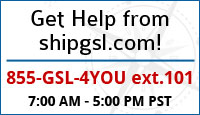For those of you shipping Household Goods or Personal Effects, UPS Freight has a 500 lb minimum charge for shipping Household Goods under NMFC items 100200 thru 100292. See below, from the UPS Tariff.
ITEM 615
HOUSEHOLD GOODS OR PERSONAL EFFECTS
Carrier may accept household goods (“HHG”) only when each of the following conditions is met……
8. The minimum charge for an LTL shipment of household goods or personal effects as described in NMFC Items 100200 through 100292, will be for 500 pounds at the applicable rate, but not less than the minimum charge published between the origin and destination in which the shipment is moving.
Eliminating Damage
Although it’s not possible to eliminate damage to your goods while in transit, there are ways to help minimize it. The following is a guideline for how to package and secure your freight.
- When possible, heavy, bulky items should be placed on pallets for improved handling.
- To maximize carton strength, stack cartons on the pallet vertically. You can secure cartons to a pallet with banding, shrink-wrap, stretch-wrap, or breakaway adhesive.
- Always use pallets that are in good condition and strong enough to support and secure your products.
- Do not overload a pallet with weight, height, or volume as this can lead to the pallet collapsing and/or your load moving.
- Using masonite sheets or similar products on the top of your pallet. will provide extra protection from other freight that may be loaded on top during transit.
- When stacking cartons onto pallets, make sure they are packed tightly and tie stacked from layer to layer. Avoid any overhang as this can put the freight at risk of being exposed to potential damage from other loaded freight.
- Where possible protect your products with some outer packaging (e.g. cardboard, bubble wrap or plastic wrap) as this will prevent rubbing, scratching or marking your product.
- Banding or strapping is recommended for heavy items to secure them to the pallet.
- If your goods are fragile or top load only, use stickers to identify and determine the best means of safely transporting your freight.
- When unconventional items are consigned, it is recommended that alternative packing methods be used to ensure safe handling and transport.
- Items that cannot be lifted by a forklift should be clearly noted at the time of booking. The freight should be marked in bold writing with correct lifting instructions. These instructions must also be noted on the consignment note.
- If specialized lifting equipment is required, please give advanced notice to allow us to make the correct arrangements. Please note that such provisions may incur additional charges.
- Wheeled cargo is not allowed by most carriers. Even if the wheels can lock, they much prefer it to be placed on a pallet or skids. The lock(s) can come undone, and then the cargo is free to roll around in the back of the trailer, damaging other freight, or yours.
Questions: Can your item be dropped from 12 inches and not be damaged? Can it be fork lifted without being damaged?
If you answer ‘No’ to either question, you need to fix it.
Make sure to inspect your inbound cargo upon arrival, BEFORE the driver leaves. If there is damage, have it noted on the bill of lading. This will help, should a claim need to be filed.

